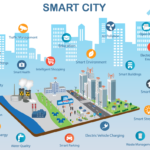Introduction:
As the frequency and intensity of natural disasters escalate worldwide, the need for resilient and disaster-resistant designs in construction becomes increasingly apparent. Engineers and architects are embracing innovative solutions to create buildings and infrastructure that can withstand the forces of nature. In this article, we explore the principles and advancements in disaster-resistant designs that prioritize safety, sustainability, and the well-being of communities.
- Understanding Resilient Design:
Resilient design encompasses a comprehensive approach to mitigate the impact of natural disasters. It involves integrating structural integrity, redundancy, and adaptability to enhance a building’s ability to withstand extreme events such as earthquakes, hurricanes, floods, and wildfires. The goal is to ensure that structures not only survive but can quickly recover and remain functional post-disaster.
- Earthquake-Resistant Techniques:
In seismically active regions, earthquake-resistant designs are of paramount importance. Engineers employ various strategies, such as base isolators, damping systems, and reinforced concrete frames, to dissipate and absorb seismic energy. These techniques improve a building’s ability to withstand ground shaking and reduce damage to its structural components.
- Hurricane-Resistant Construction:
Coastal regions vulnerable to hurricanes require buildings that can withstand strong winds and storm surges. Hurricane-resistant designs incorporate reinforced walls, impact-resistant windows, and aerodynamic shapes to minimize wind pressure and prevent damage. Elevated foundations are utilized to protect against flooding caused by storm surges.
- Flood-Resistant Measures:
For areas susceptible to flooding, flood-resistant designs are essential. Buildings are constructed on elevated platforms or with raised ground floors to prevent water ingress. Additionally, permeable materials and green infrastructure are used to manage stormwater runoff and reduce flood risks.
- Wildfire Mitigation:
In regions prone to wildfires, wildfire-resistant designs are crucial for protecting structures and communities. Fire-resistant building materials, such as non-combustible roofing and exterior cladding, are employed to reduce the risk of ignition. Landscaping strategies, such as defensible space, create buffer zones to minimize the spread of fires to buildings.
- Building with Resilient Materials:
Selecting appropriate materials is a cornerstone of resilient design. Engineers opt for robust and durable materials that can withstand harsh environmental conditions. From reinforced concrete and steel to fiber-reinforced composites, these materials enhance a building’s structural integrity and longevity.
- Retrofitting Existing Structures:
While new buildings can be designed with resilience in mind, retrofitting existing structures is equally vital. Engineers retrofit older buildings to meet modern safety standards, improving their ability to withstand disasters. Techniques like strengthening structural elements and adding supplemental bracing enhance the building’s resilience.
- Community Planning for Resilience:
Building resilience goes beyond individual structures; it involves community planning. Engineers collaborate with urban planners to design communities that can collectively respond and recover from disasters. This includes establishing evacuation routes, emergency shelters, and efficient communication networks.
Conclusion:
As natural disasters continue to impact communities worldwide, the importance of resilient and disaster-resistant designs cannot be overstated. Engineers, architects, and urban planners play a critical role in creating structures that prioritize safety, sustainability, and the well-being of inhabitants. By embracing innovative techniques and materials, and integrating resilient design principles into every aspect of construction, we can build a future where our cities and communities are better prepared to face the challenges of an unpredictable world.


